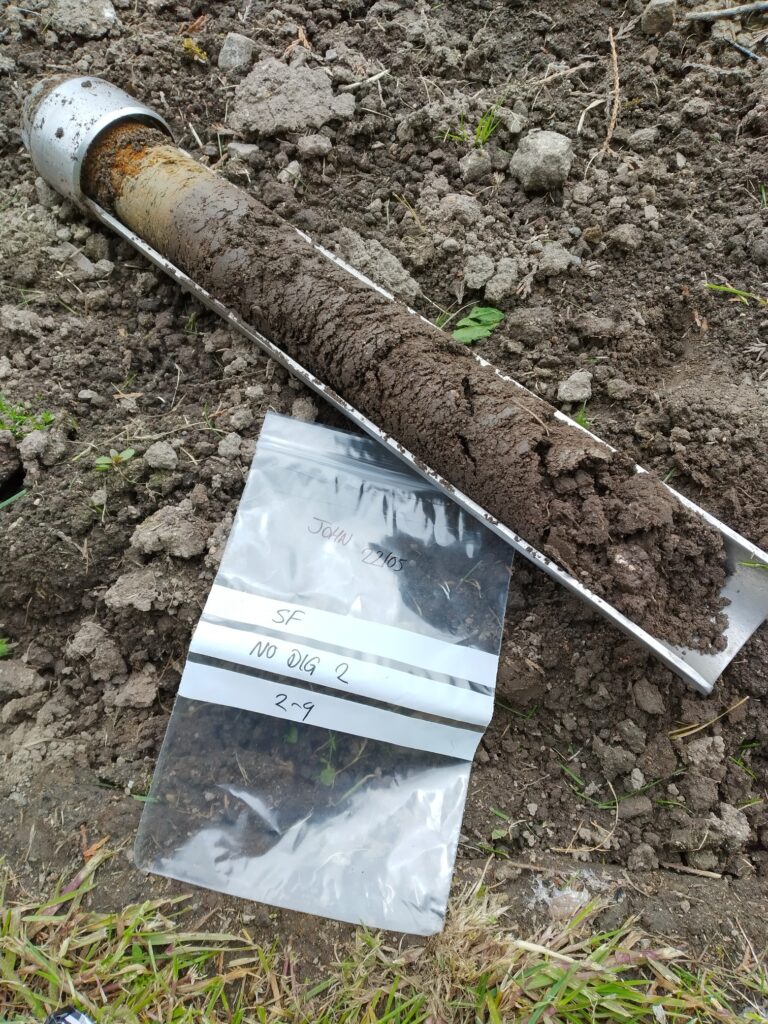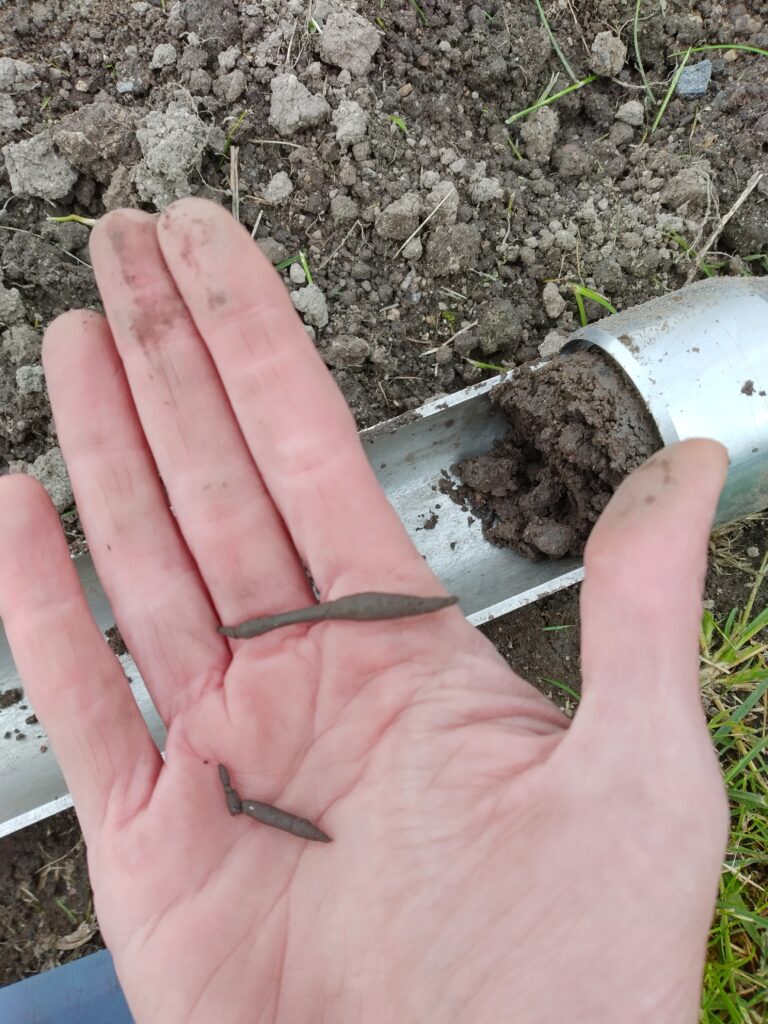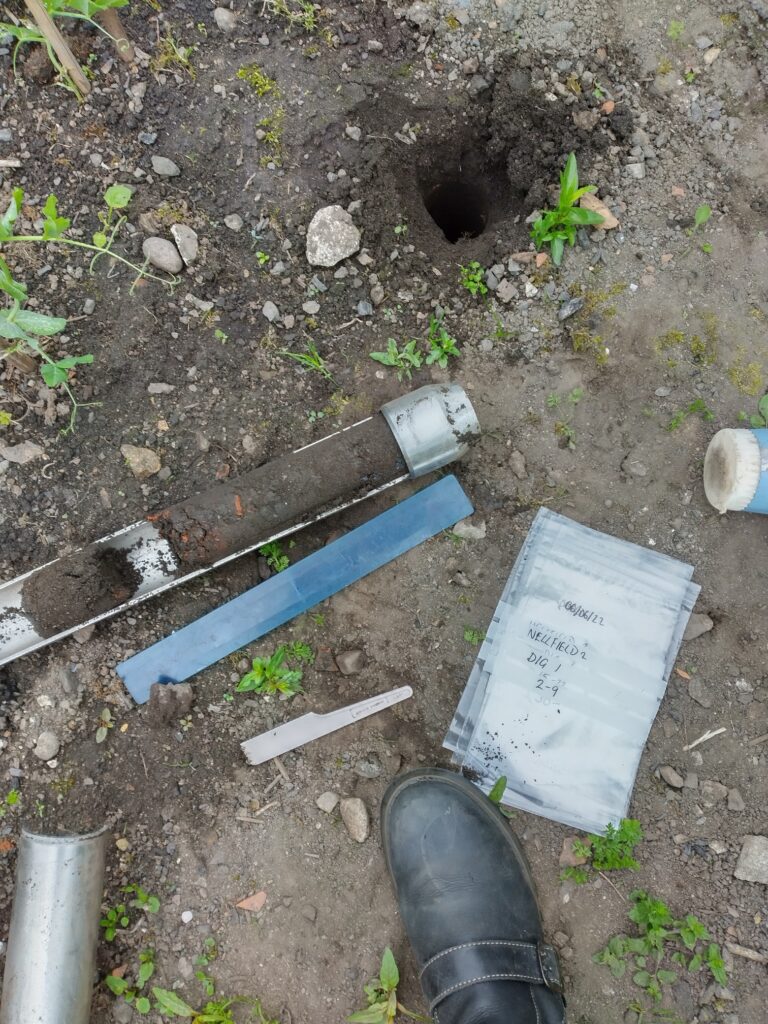
Methods
Recruitment process
Local allotment holders and community garden networks in Aberdeen city were approached about the soil study via email. Growers were given basic information and invited to participate. Interested parties were given further information and filled in a questionnaire about their growing practices. Based on answers relating to experience and growing practices, eight people from different sites were selected for follow-up. This stage involved interviews about management practices, and the collection of soil samples.
In the field
Participants gave background information on their allotment plot, soil management and fertiliser use. They then shared tips based on their own experiences. Soil samples were collected from allotments at Bedford Rd, Gray St, Heathryfold, Holburn St, Nellfield 2 and Slopefield, and from Powis Edible Garden and Springhill Community Garden using a 40 cm soil auger. Cores from the auger were split into different sections before being bagged so soil from different depths could be analysed separately. The first 2 cm of soil was discarded due to high levels of variability on the very surface. Samples were collected from depths of 2-9 cm, 15-22 cm, and below 30 cm.



In addition to soil collection, the degree of soil compaction was measured using a soil penetrometer. Penetrometers are devices which gauge the resistance of the ground to a narrow rod being driven into the soil. Resistance is measured in kPa and is a useful indictor of whether or not root growth is restricted by soil compaction. Values greater than 2000 kPa are highly restrictive to root growth. This is more likely to be a problem on a larger scale agricultural areas where heavy machinery is frequently used.
Laboratory processes
soil Bulk density
Soil was stored at approximately 1°C until processed. The first stage was to weigh the soil and sieve all individual samples through 2 mm gauge sieves. This ensures that tests which use small quantities of soil do not have results skewed by anomalies such as stones or lumps of wood chip. The weight of the individual soil samples along with volume calculated from the dimensions of the soil auger allow the calculation of soil bulk density (BD).
SOil moisture content
Samples of 5 – 10 g were dried overnight at 105°C and reweighed to establish the soil moisture content. Moisture content is important to know so all samples can be compared on the same dry weight basis. The samples were then placed in a muffle furnace at 550°C for 2 hours to burn off the organic matter. The difference in weight before and after being in furnace was then calculated as a percentage to find the soil’s % organic matter content.
soil pH and available nitrogen
The next processes were to measure the pH and perform extractions to enable the measurement of nitrogen. For pH, 10 g of soil samples were placed in centrifuge tubes with 25 ml of deionised water. The tubes were shaken on an end-over-end rotary shaker for 30 minutes. The pH was then measured on a calibrated laboratory pH meter. Ammonium (NH4+) and nitrate (NO3-) were measured as these are the forms of nitrogen which are available to plants. This was done within two days of soil collection as pH, nitrate and ammonium content are all volatile and need to be established quickly.
Extractions were done by measuring 5 g of soil into 50 ml of 1M potassium chloride (KCl), shaking for 1 hour and filtering the contents into clean containers. The collected liquids were then input into a flame injection analyser (FIA) for analysis.
soil Phosphorus, Potassium, calcium and magnesium
A similar extraction process was used to enable tests for available phosphorus, potassium, calcium and magnesium. 2 g of soil was measured into conical flasks with 50 ml of 2.5% acetic acid solution (vinegar) added to each. The flasks were shaken for 2 hours before filtering the contents into storage containers. Phosphorus content was measured on the FIA, while the other elements were measured using an atomic absorption spectrometer (AAS). The AAS works by measuring single elements from the sample which have been atomised in a hot flame. The atomised sample is illuminated by light from a lamp at a particular wavelength. The energy absorbed is proportional to the concentration of the element being tested.
Calibration curves were established for each run of the FIA and AAS, with only r2 values of 0.99 or over being accepted. Dilutions were performed until all of the solutions were within the range of the calibration curves. All runs of the AAS and FIA were quality controlled through use of independent standards and blanks.
Feel free to use the contact us on [email protected] for further details.